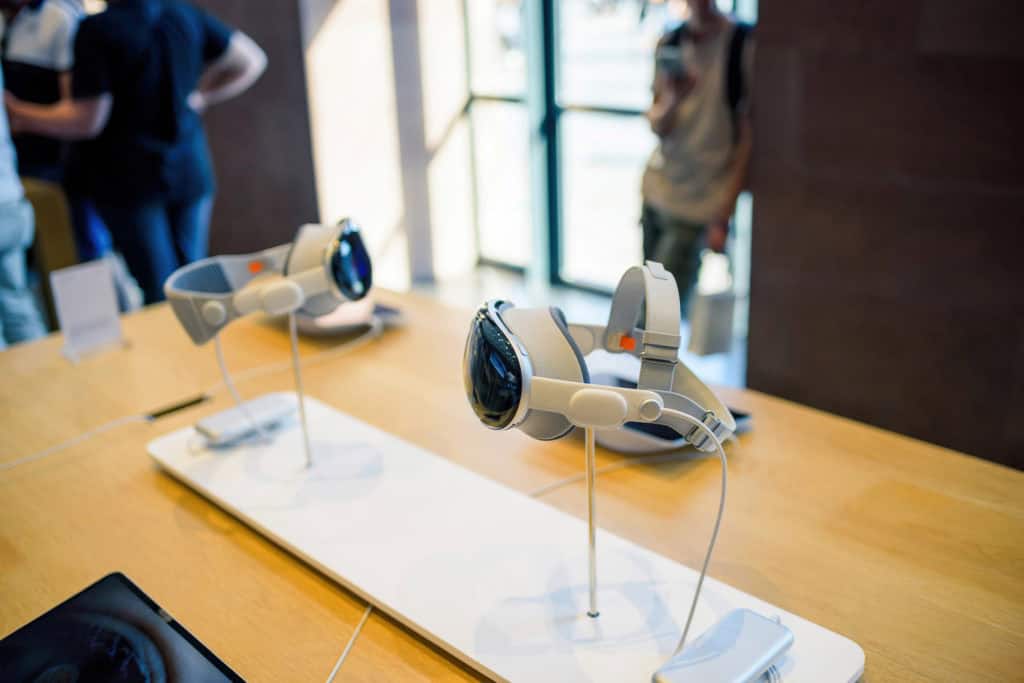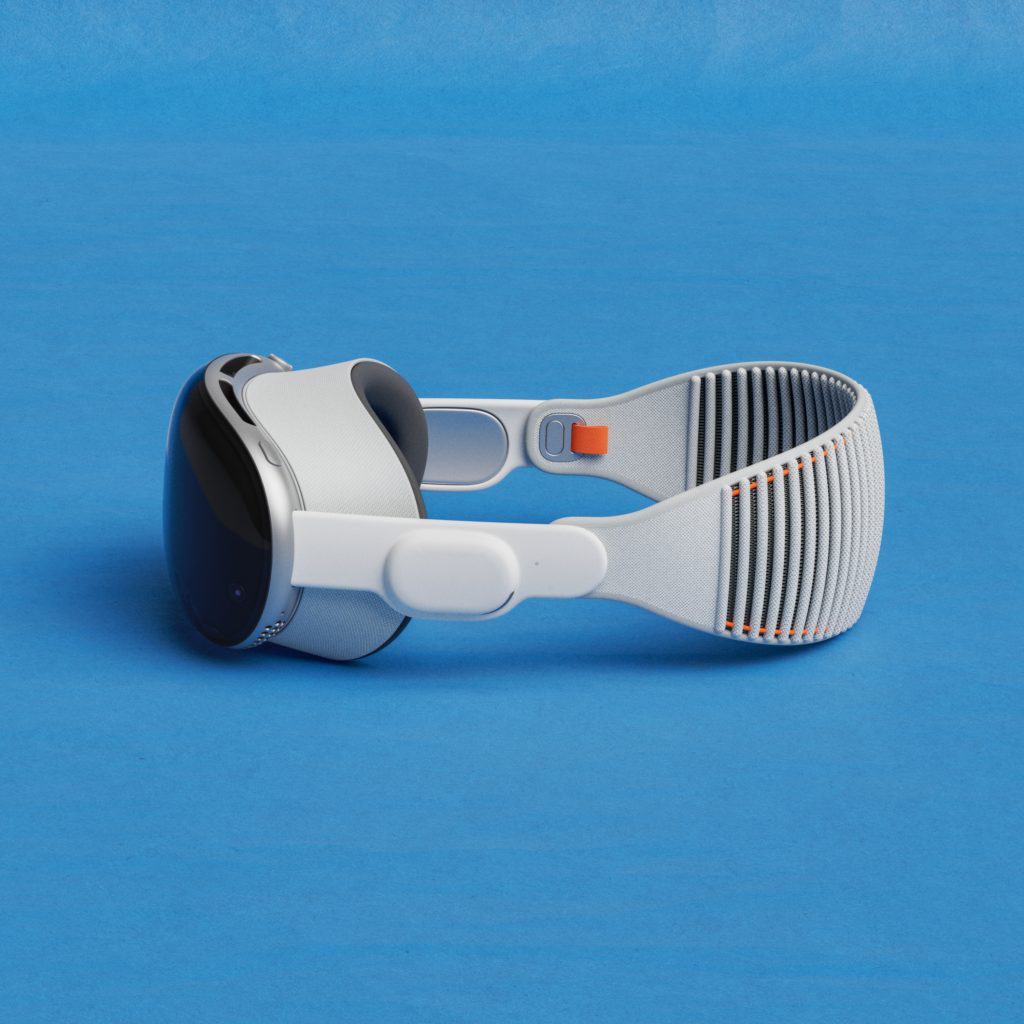The once highly anticipated Apple Vision Pro is now facing critical challenges, with production cuts and declining sales casting doubt on its future. Launched with great fanfare, this mixed reality headset promised to revolutionize how we interact with augmented and virtual reality. However, just like Icarus, Apple may have flown too close to the sun. Rising competition, high pricing, and lackluster consumer interest are threatening the Vision Pro’s survival in the competitive tech market.
Current State of the Vision Pro
The Vision Pro debuted as Apple’s groundbreaking foray into the mixed reality space, but since mid-2024, its trajectory has faltered. Apple has drastically reduced its production levels to about half of what was expected. Initially, Apple planned to produce 1,000 units per day, but as of early summer 2024, production has plummeted. Now, with a total of only 500,000 to 600,000 units manufactured, the headset’s future looks grim.
Key Challenges:
- High Pricing: Retailing at $3,500, the Vision Pro’s price tag is a significant barrier to adoption.
- Lukewarm Consumer Interest: Due to limited apps and lack of engaging content, many potential buyers are hesitant to invest.
- Competition: Affordable alternatives, such as Meta’s Quest 3, have gained more traction.
As a result, Apple has hinted at a shift in strategy, potentially planning to release a lower-cost headset in 2025. For now, the clock is ticking on whether the Vision Pro can find a foothold in the market.
Reasons for Declining Sales
One of the key factors behind the Vision Pro’s slow sales is its prohibitively high price. At $3,500, it is inaccessible to the average consumer. In comparison, competitors like Meta’s Quest 3, priced around $500, offer similar experiences at a fraction of the cost. This price disparity limits the Vision Pro’s appeal, relegating it to a niche market of early adopters.
Declining Sales Factors:
- Price Point: Many consumers are unwilling to invest in a $3,500 device.
- Lack of Compelling Content: The Vision Pro suffers from a weak app ecosystem. Popular platforms such as Netflix and Spotify have yet to develop versions compatible with the headset, further reducing its value proposition.
- Competition: More affordable devices like Meta’s Quest 3 and Ray-Ban Meta Glasses offer reasonable alternatives for everyday users.
In short, Apple’s inability to address these issues has left the Vision Pro struggling to achieve its initial sales targets, casting a shadow over its future in the AR/VR market.
Production Cutbacks Announced
With weak consumer demand, Apple has responded by significantly cutting production. Reports suggest that Apple’s supplier, Luxshare, has been instructed to reduce the output of Vision Pro components. In fact, one factory even suspended production altogether by May 2024, with total manufacturing potentially halting by the end of the year if demand remains low.
Production Details:
- Current Output: Reduced to 1,000 units per day, down from peak levels.
- Components Produced: Between 500,000 to 600,000 units have been manufactured.
- Future Plans: Apple may pivot to producing a lower-cost headset, possibly launching around 2025.
These production cutbacks signal a crucial reassessment of the Vision Pro’s future, with Apple considering whether continued investment in the device makes sense amid such lackluster sales.
Analyst Predictions and Market Insights
With sales faltering, analysts are weighing in on the Vision Pro’s future. Many agree that Apple needs to adjust its pricing strategy or risk losing its competitive edge in the growing mixed reality market.
Analyst Outlook:
- Production Cuts: Continued reductions in production could lead to a total halt by the end of 2024.
- Lower-Cost Headset: Analysts predict that Apple may introduce a more affordable mixed reality headset, priced around $2,000, which could launch by 2025.
- Content Ecosystem: A stronger focus on building an ecosystem of engaging apps and services may be necessary to reignite consumer interest.
Unless Apple can develop a compelling content library and offer a more reasonably priced product, the Vision Pro may continue to see declining sales, with discontinuation becoming a real possibility.
Impact of High Pricing
The $3,500 price tag on the Vision Pro has significantly hampered its market appeal. For many consumers, this high cost doesn’t justify the limited content and functionality currently available. Without more compelling applications or services, the Vision Pro struggles to gain traction beyond a small segment of tech enthusiasts.
Competitive Pricing Comparison:
- Meta Quest 3: Priced at $500, it offers many similar features, making it a more accessible choice for average users.
- Ray-Ban Meta Glasses: Available for $300, these AR glasses provide an affordable entry into augmented reality.
As the mixed reality market becomes more crowded, Apple must confront this pricing disparity if it hopes to make the Vision Pro a viable product for mainstream users.
Competition in the Mixed Reality Market
The mixed reality space is fiercely competitive, and Apple’s Vision Pro faces stiff competition from companies like Meta and others. While Apple has positioned the Vision Pro as a premium product, its competitors offer more affordable alternatives that attract the broader market.
Competitor Landscape:
- Meta Quest 3: At $500, this device offers a balance of performance and affordability, making it a popular choice.
- Ray-Ban Meta Glasses: Priced at $300, these AR glasses are stylish and consumer-friendly, adding pressure on premium-priced competitors like the Vision Pro.
If Apple doesn’t act quickly to address these competitive challenges, it risks losing its place in the mixed reality market.
Future Prospects for Apple
As the Vision Pro continues to face an uphill battle, Apple appears to be rethinking its strategy for the mixed reality market. Reports suggest that Apple may be developing a more affordable headset, priced at around $2,000, slated for release in 2025. This device would likely appeal to a broader audience, with production goals of around 4 million units, compared to the Vision Pro’s much smaller output.
Future Strategies:
- New Headset Model: A more affordable model launching in 2025 could provide Apple with a stronger market position.
- Increased Production: Higher production rates of around 4 million units would signal a more mainstream approach to AR/VR.
- Content Development: Apple may need to focus on creating compelling, exclusive content to differentiate its products from competitors.
By introducing a lower-cost model and expanding its content ecosystem, Apple hopes to regain momentum in the competitive mixed reality landscape.
The Vision Pro’s Uncertain Path
The Vision Pro, once heralded as Apple’s next big innovation, is now at a critical juncture. With soaring prices, limited content, and fierce competition, the future of this ambitious product looks uncertain. If Apple doesn’t make swift adjustments to its pricing, content offerings, and overall strategy, the Vision Pro could be remembered as a short-lived experiment in the world of mixed reality. For now, all eyes are on Apple to see whether it can course-correct and lead the next wave of AR/VR technology.



